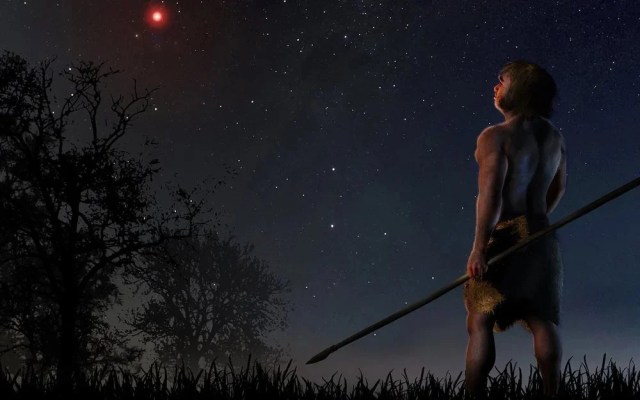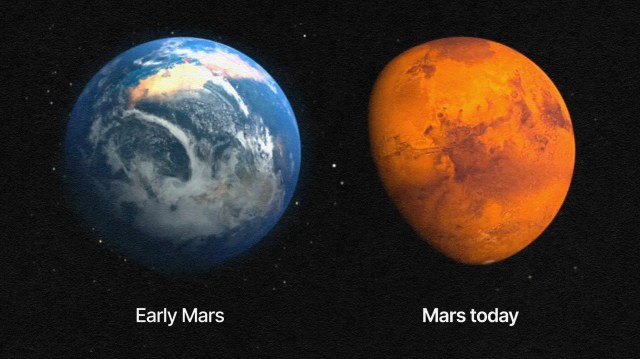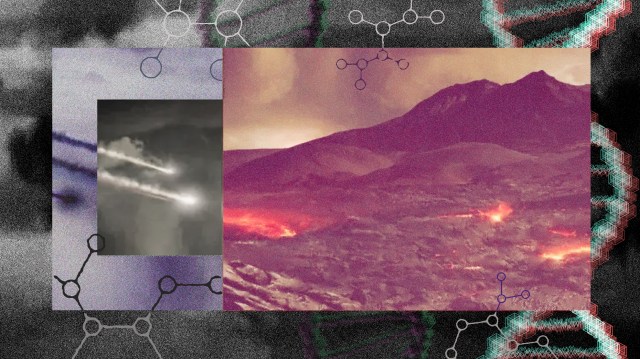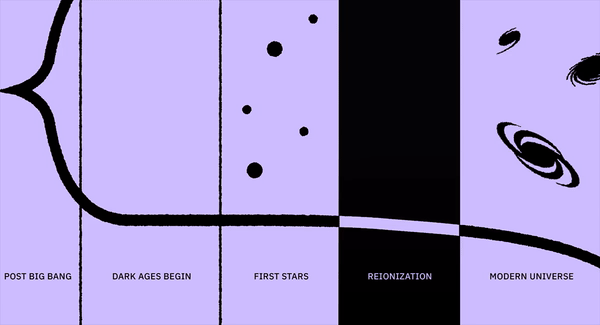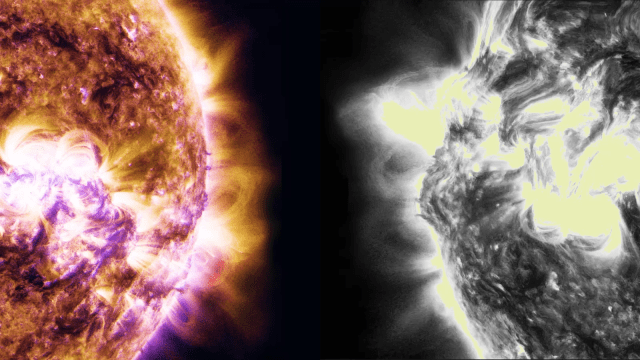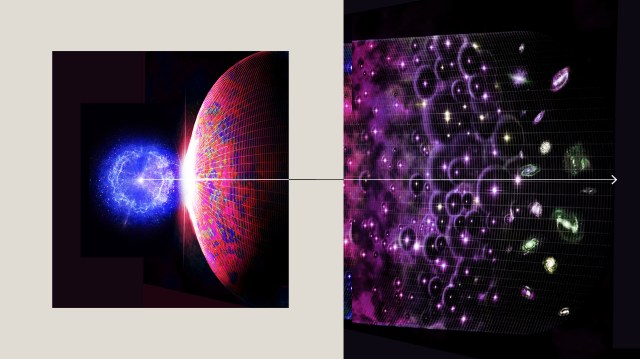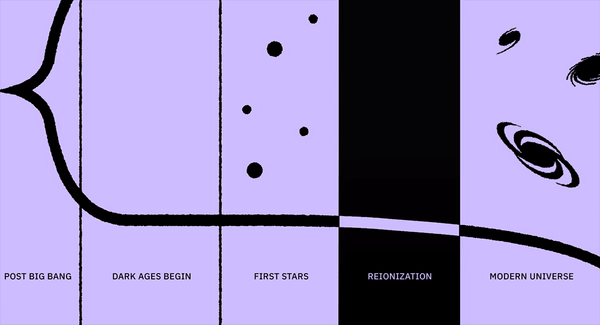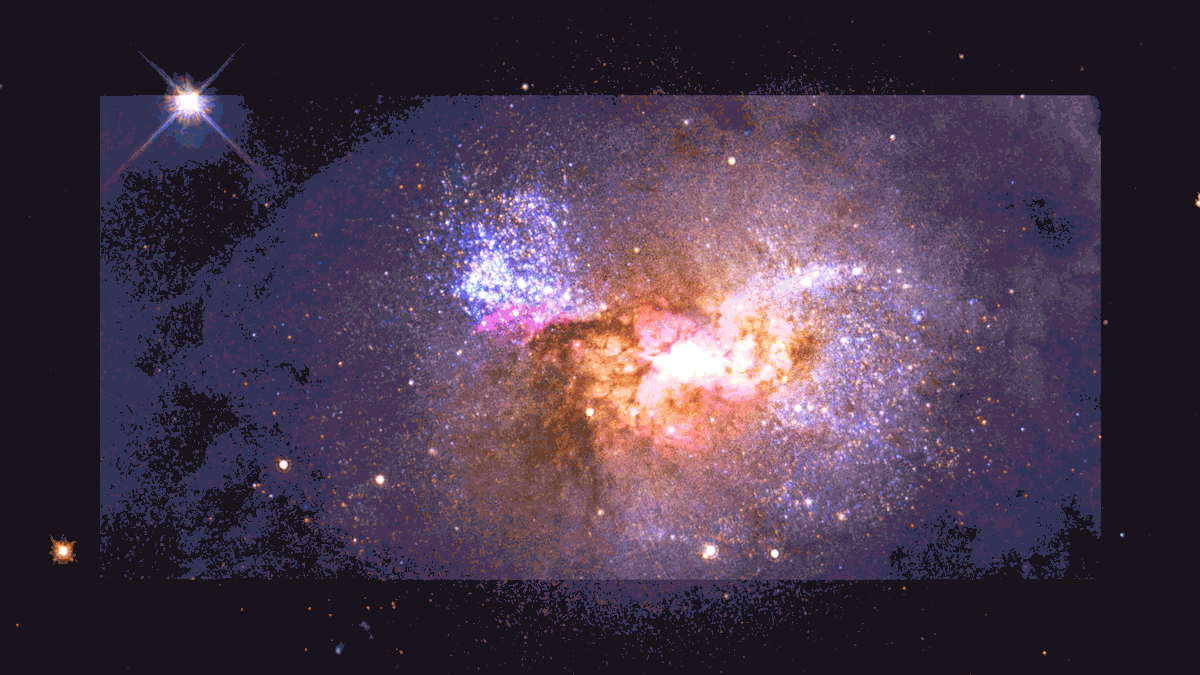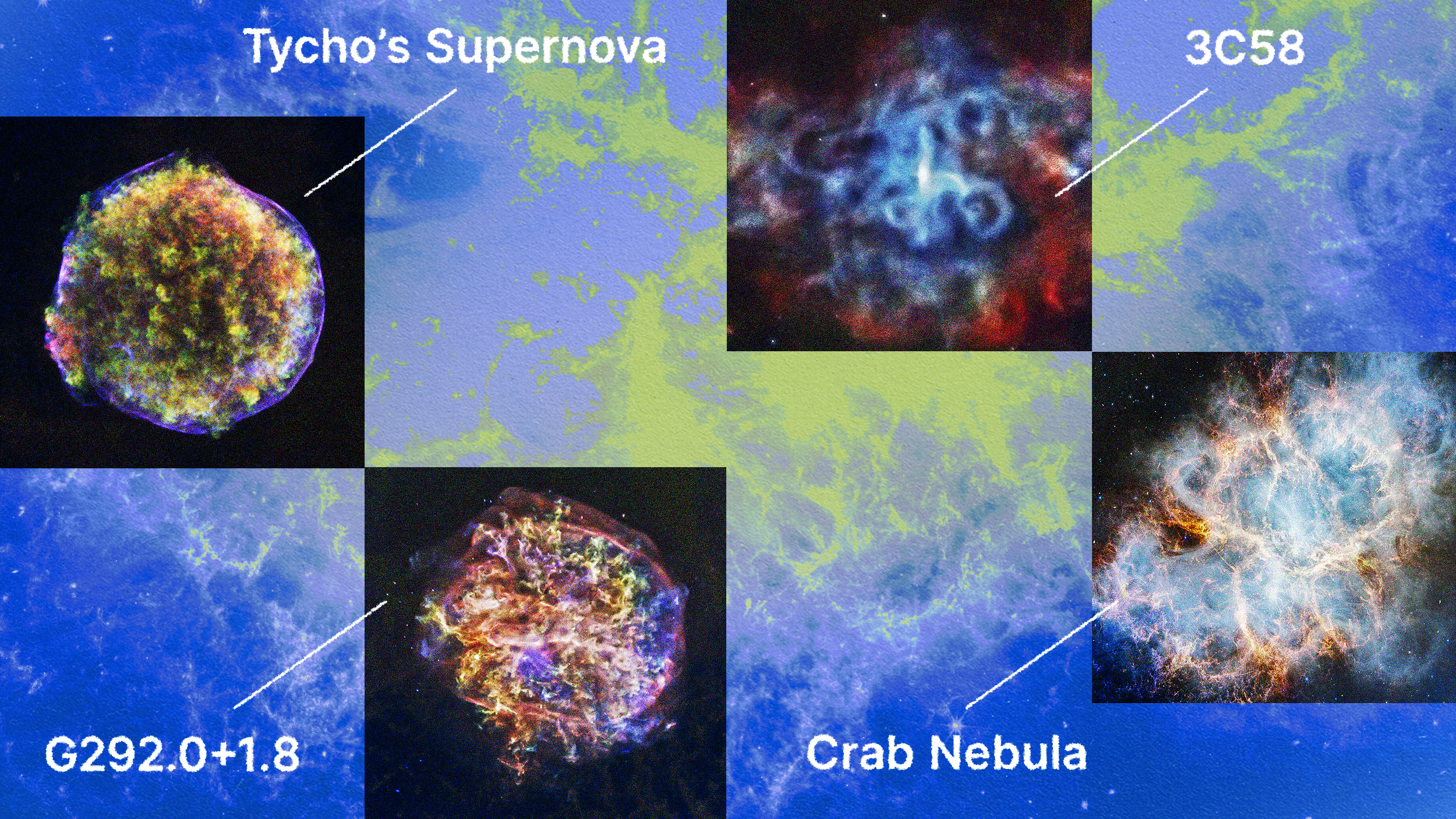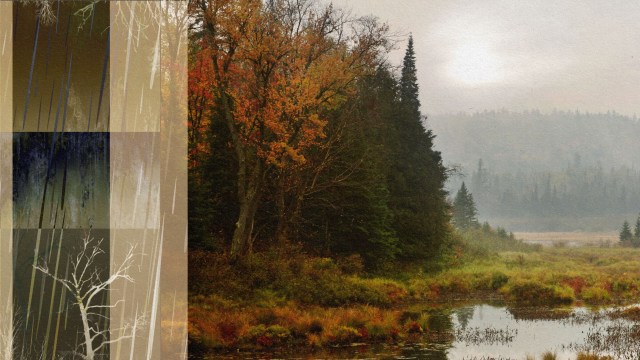What was it like when supermassive black holes arose?

- Today, at the center of nearly every massive galaxy, a supermassive black hole ranging from millions to tens of billions of solar masses takes up residence.
- But even early on, just a few hundred million years after the Big Bang, these black holes were ubiquitous and extremely massive already. How did they get that way?
- With a slew of new observations and a compelling theoretical scenario, here’s the cosmic story of how we think these supermassive black holes actually arose,
One of the biggest challenges for modern astrophysics is to describe how the Universe went from a uniform place without planets, stars, or galaxies to the rich, structured, diverse cosmos we see today. Not just with a general story, mind you, but in gory detail, going not only as far back as we can see, but even farther: to what must have existed at an epoch where even our most distant observations are insufficient to take us there. Going back to the limits of what’s observable, to when the Universe was just a few hundred million years old, we find a slew of fascinating objects.
- Stars and star clusters exist in abundance.
- Galaxies with perhaps up to a billion stars light up the Universe.
- Even quasars with very large black holes formed early on: well before the Universe was even one billion years old.
It’s the old chicken-and-egg problem made new: if there’s a maximum rate at which black holes can grow, and the Universe wasn’t born with them, how did we make the ones that we see? In other words, how did the Universe make such ultra-massive black holes in such short periods of time? After decades of conflicting stories, scientists finally think we know what happened.

Just 50-to-100 million years after the Big Bang, the very first stars of all began to form. Massive gas clouds started to collapse, but because they were made up of hydrogen and helium alone, they struggled to radiate heat away and dissipate their energy. As a result, these clumps that gravitationally form and grow need to get much more massive than clumps that form stars today, and that has repercussions for what kinds of stars form, as well as what kinds of astrophysical processes occur alongside their formation.
While today, typically, we form stars that are about 40% the mass of the Sun, the very first stars were about 25 times more massive, on average. Because the matter that leads to these stars, i.e., streams of gas, need to cool in order to collapse, it’s only the largest, most massive clumps that form early on that will lead to stars. The average “first star” might be ten times as massive as our Sun, with many individual stars reaching hundreds or even thousands of solar masses. In addition to these effects, there are cold, flowing streams of gas that collide and intersect, creating regions of dense, cold, neutral matter that rise up to tens of thousands (or perhaps even hundreds of thousands) of solar masses.
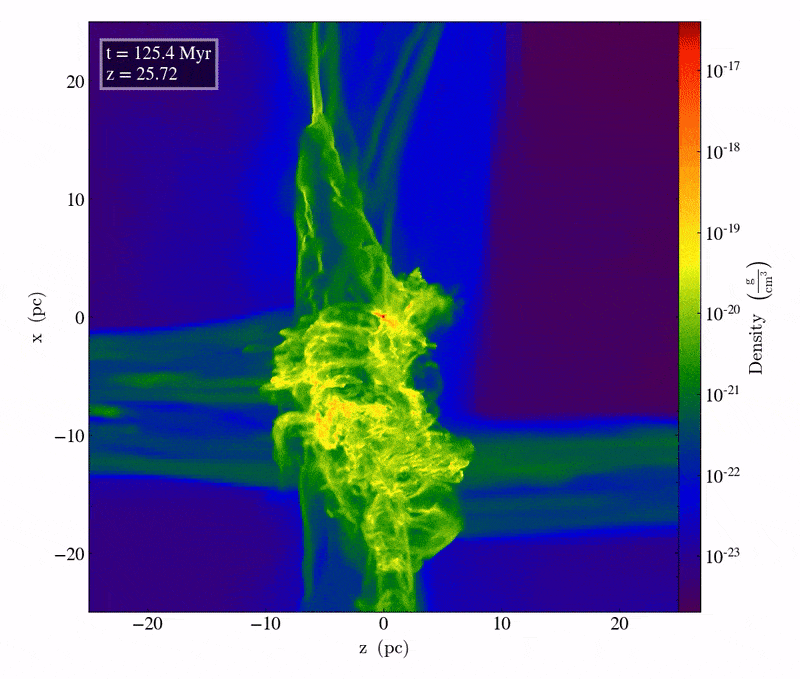
There’s long been a tension in cosmology between what’s expected and what’s observed: are the black holes that form at the centers of galaxies made from the mergers and growth of stellar remnants alone, or was there a different mechanism at play, such as either the formation of primordial black holes (black holes that the Universe was born with) or from the formation of large seed black holes that arise independently of stars and stellar cataclysms?
Let’s first consider the “from stars and stellar remnants, alone” rout. Most of the first-generation stars that form will end their life in a supernova, leading to either a neutron star or a small, low-mass black hole. But without any heavy elements at all, the most massive stars will reach such high temperatures in their cores that photons, the individual particles of light, can become so energetic that they will spontaneously begin to produce matter and antimatter pairs from pure energy alone.
You may have heard of Einstein’s E = mc², and this is perhaps its most powerful application: a pure form of energy, like photons, can create massive particles so long as the fundamental quantum rules governing nature are obeyed. The easiest way to make matter and antimatter is to have photons produce an electron/positron pair, which will happen all on its own if temperatures are high enough, and happens in some of the most massive stars even today.

In these ultra-massive stars, as in all stars, gravitation is attempting to pull all of that matter in toward the center. But photons, and all of the radiation produced in the cores of these stars, pushes back, and holds the star up, preventing its collapse. This happens independent of the star’s mass, as that “balance point” must be achieved inside any object that isn’t going to vary, oscillate, collapse, or explode. However, in these most massive stars, the radiation pressure is higher, the temperatures are higher, and the high-energy processes that occur are more numerous, including this phenomenon, known as “pair production.”
When you start producing electron-positron pairs from these photons, however, some of that radiation pressure drops, as photons, which move at the speed of light, exert a greater amount of outward pressure than massive particles that move at speeds slower than light. Rising up to a temperature great enough to produce these electron/positrons pairs also depletes your star’s ability to hold itself up against gravitational collapse. And while it’s true that there are a few, narrow mass ranges that lead to the star destroying itself entirely, a large fraction of cases will result in the entire star directly collapsing to form a black hole: the direct collapse scenario that has been observed in a few incidents even in the late-time Universe.

This is a remarkable step! It means that the most massive stars of all, with many hundreds or even thousands of solar masses, can form when the Universe is just 100 million years old or so: less than 1% of its current age. These stars will burn through their nuclear fuel the fastest, in 1 or 2 million years, tops. And then, their cores will get so hot they’ll start turning photons into particles and antiparticles, which causes the star to collapse and heat up even faster.
Once you cross a certain threshold, all you can do is collapse. And this isn’t just theory, either; we’ve actually seen stars directly collapse without a supernova, leading directly to what could only be a black hole.
But that’s only the beginning. Whenever you have a large cluster of massive objects acting primarily under the force of gravity, different objects get kicked around from these interactions. The least massive objects are the ones that are the easiest to eject, while the most massive objects are the toughest to eject. As these stars, gas clouds, clumps, and black holes dance around, they undergo what’s known as mass segregation: the heaviest objects fall to the gravitational center, where they interact and can even merge.
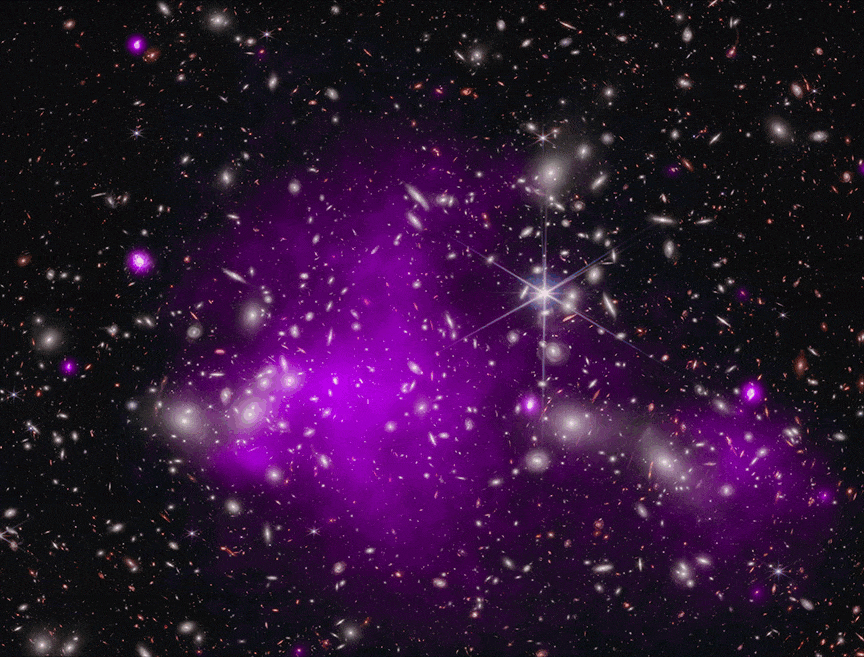
All of a sudden, instead of a few hundred black holes of a few hundred or a few thousand solar masses, you can wind up with one single black hole of approximately 100,000 solar masses or even more.
Remarkably, that might not even be the fastest way to grow a massive “seed” for a supermassive black hole to form out of in our cosmic history. Just as massive-enough stars can directly collapse to a black hole without a stellar cataclysm, it’s thought that a dense, massive, and cold enough population of gas can directly collapse to a black hole, perhaps even without a single star at all as an intermediary.
This scenario recently got bolstered by an unexpected observation: made by combining both NASA Chandra X-ray data and JWST data of galaxies from the ultra-distant Universe. In JWST data, a distant, faint, low-surface-brightness galaxy was found from around 500 million years after the Big Bang: a galaxy that contains only around 10 million (maybe up to 100 million, but not more than that) solar masses worth of stars within it. Yet in this galaxy, an active, feeding, X-ray emitting black hole of around 9 million solar masses exists. This black hole couldn’t have formed from stars with so few other stars in this galaxy, but the direct collapse of a gas cloud is eminently possible.

The big issue is that we’ve already seen large, relatively grown-up black holes even in the early Universe: of hundreds of millions or even over a billion solar masses after just several hundred million years of cosmic evolution. These black holes can grow in bursts that typically exceed the maximum rate of growth (the Eddington rate) that’s sustainably allowed over long time periods, but if we trace that growth back to when we need a “seed” to grow from, those seeds must have been tens of thousands or even hundreds of thousands of solar masses to begin from; starting from a “stellar mass” seed won’t work!
You might think to take the black holes from a single star cluster, merge them together, bring other star clusters with their own black holes in, and have them merge as well. But even that can’t grow what we call an “overmassive” black hole, or a black hole whose mass is comparable to the mass of all stars within a galaxy combined. The fact that such a galaxy exists tells us that no, merging stellar mass black holes together, even en masse, can’t be the sole way that we made supermassive black holes in the Universe. Some sort of massive seed, more massive than standard star-formation allows for, is required.
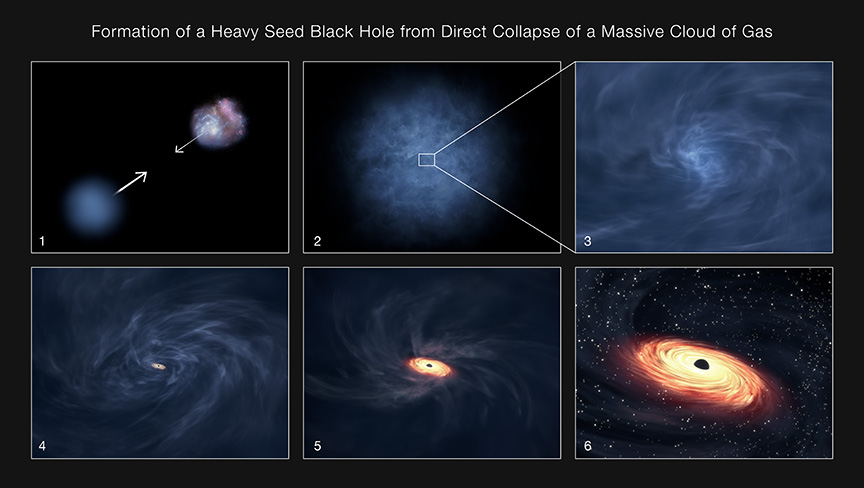
By the time the Universe is no more than 250 million years old, however, star clusters, streams of gas, and these “seed” black hole regions can indeed merge together, as the relentless pull of gravity draws nearby regions into one another. Gravity is a force that truly favors the overdog, and as time goes on, tens, hundreds, and even thousands of these initial, early clusters can come together to grow into larger and larger galaxies. The cosmic web causes structures to merge together into ever-larger ones, especially at early times.
This can easily take us up to black hole masses that are several to many tens of millions of solar masses by the time we get to the first observed galaxies. Additional effects are at play as well; it isn’t just black holes that merge together to build supermassive ones in the center; it’s any matter that falls into them! These early galaxies are compact objects, and are full of stars, gas, dust, star clusters, planets and more. Whenever anything gets too close to a black hole, it’s at risk of getting devoured, as the black hole’s tidal forces will tear the object apart, forcing it into a stream, flow, and even an accretion disk surrounding the black hole.

Remember that gravity is a runaway force: the more mass you have, the more mass you attract. And if something gets too close to a black hole, its matter gets stretched and heated, where it will become part of the black hole’s accretion disk. Some of that matter will get heated and accelerated, where it can emit quasar jets. But some of it, a lot of that mass, will fall in, causing the black hole’s mass to grow even further.
If there were one vocabulary word that astrophysicists who study the growth of objects via gravity wish that the general public knew, it would be this oddball: nonlinear. When you have a region of space that’s denser than average, it preferentially attracts matter. If it’s just a few percent denser than average, the gravitational attraction is just a few percent more effective than average. Double the amount that you’re overdense, and you double the amount you’re more effective at attracting stuff.
But when you reach a certain threshold of being about double the average, you become much more than twice as effective at attracting other matter. When you start “winning” the gravitational war, you win harder and more severely as time goes on. The most massive regions, therefore, not only grow the fastest, they eat everything around them. By the time half a billion years have elapsed, the amount of mass you’ve drawn into you can be enormous.

The earliest galaxies and quasars we’ve ever found are among the brightest, most massive ones we expect to exist. They are the great winners in the gravitational wars of the early Universe: the ultimate cosmic overdogs. By time our telescopes reveal them, 300-to-700 million years after the Big Bang (with quite a few quasars joining the most distant galaxies in this regime), the most massive among them already have billions of stars and supermassive black holes of many hundreds of millions of solar masses within them. We haven’t yet found the earliest galaxies, stars, black holes, or quasars of all, but even the ultra-early ones we’ve found already exhibit substantial evidence of evolution to them.
However, don’t be fooled by those who point to these pieces of evidence and proclaim, “cosmology is broken!” This is not a cosmic catastrophe; this is a piece of evidence that showcases the runaway power of gravitation in our Universe. Seeded by the first generation of stars, cold streams of gas, and the relatively large black holes they produce, these objects merge and grow within a cluster, and then grow even larger as clusters merge to form galaxies and galaxies merge to form larger galaxies. By today, we have black holes tens of billions as massive as the Sun. But even in the earliest stages we can observe, billion-solar-mass black holes are well within reach. As we peel back the cosmic veil, improved data should teach us exactly how these cosmic behemoths grew up.


